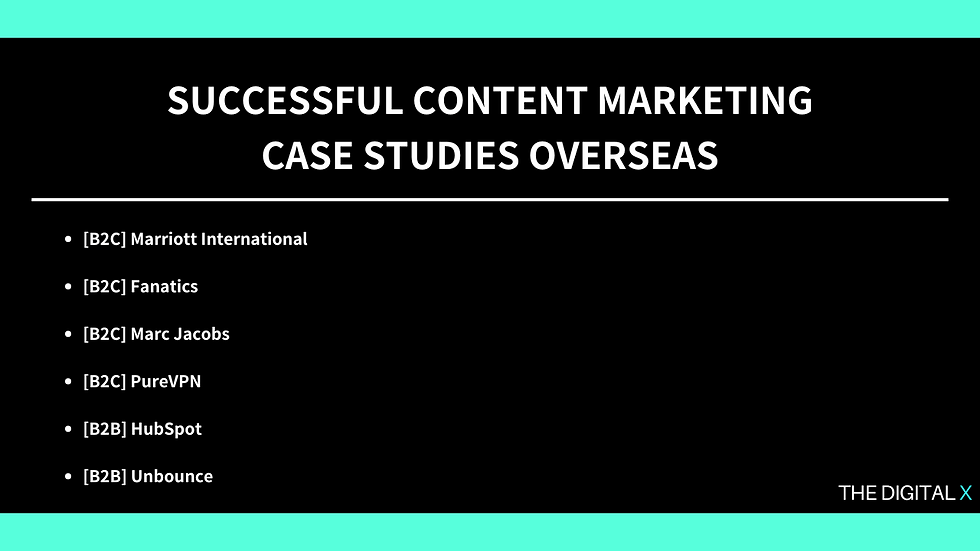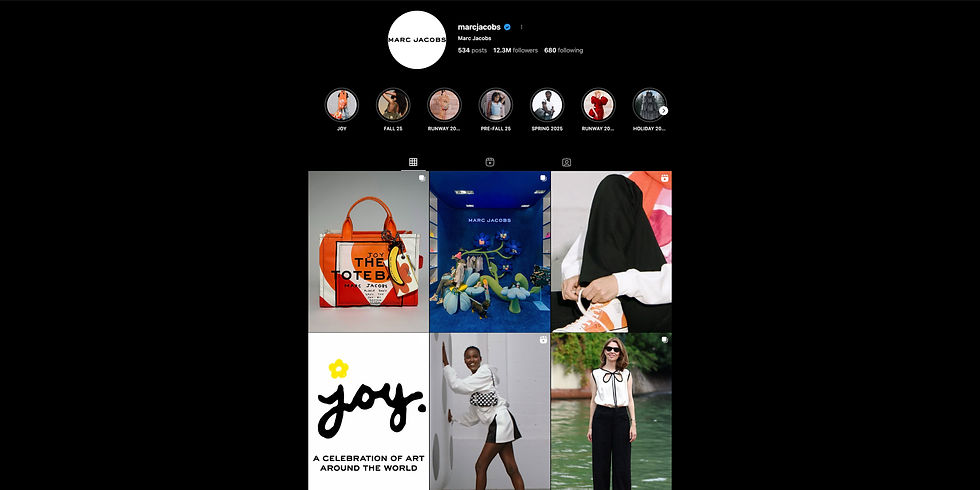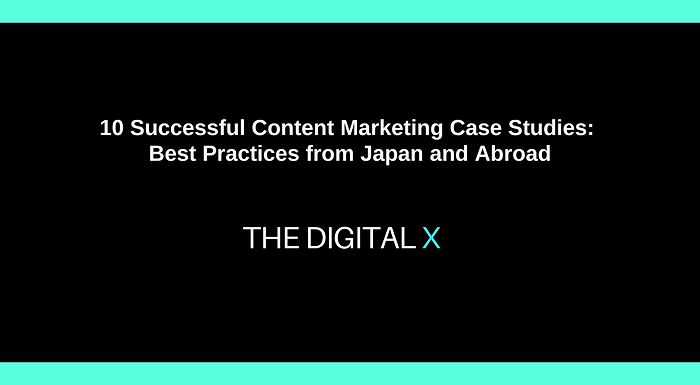- The Digital X
- Sep 10, 2025
- 11 min read
As traditional advertising methods continue to decline, the importance of content marketing has been growing year by year.
In today’s digital environment, consumers have more opportunities than ever to compare information and make informed choices.
In this article, The Digital X, with over 20 years of experience in digital marketing, will cover the following key points:
We’ll also share practical tips on how to effectively outsource content marketing, so you can apply these insights directly to your business strategy.
What Is Content Marketing?
Content marketing is a strategy where businesses create and share valuable information and content with the goal of engaging potential customers and building long-term relationships.
The approach typically uses the following platforms to deliver useful information to target audiences:
Owned media (corporate websites and blogs)
Videos and infographics
Social media platforms
Whitepapers and eBooks
Email marketing, and more
Of course, this very blog by The Digital X is itself an example of content marketing in action.
Why Global Content Marketing Matters
In today’s era of globalization, content marketing tailored to international markets is gaining increasing attention — not only for companies planning overseas expansion but also for those within Japan targeting global audiences.
For cross-border content marketing to be effective, businesses must provide information that reflects local needs and expectations. Content should be crafted with a global perspective, ensuring it resonates with audiences across different countries and cultural backgrounds.
Key Differences Between Content Marketing in Japan and Overseas
There are three major differences between content marketing practices in Japan and those overseas:
Language
Different languages require accurate translation and localization, not just word-for-word conversion.
Culture and Habits
Local customs, values, and traditions influence consumer behavior, so cultural context must be reflected in content.
Preferred Content Formats
The choice of media, design style, and types of content vary greatly by country and region.
For this reason, businesses entering international markets must conduct thorough local research and design well-planned localization strategies to ensure their content is both relevant and impactful.
Key Characteristics of Content Marketing Overseas
From here, we will introduce four key characteristics of content marketing in international markets.

Four Key Characteristics of Content Marketing Overseas
1. SEO-Driven Text-Based Content Design
In overseas markets, text-based content remains the foundation of content marketing, primarily because it strengthens search engine visibility.
By strategically incorporating relevant keywords into articles, businesses optimize their pages for Google crawling and indexing, which in turn improves SEO rankings.
Text-focused content also delivers precise information that readers are actively searching for. It is especially effective for educational, detailed, and informative content, helping to attract potential customers and build long-term trust.
2. Use of Rich Content
A growing trend is the combination of text content with rich media formats. Rich content includes videos, podcasts, infographics, and other visual or audio elements that improve comprehension and boost engagement.
In overseas markets, platforms like YouTube and podcasts are particularly popular, as they provide accessible, digestible formats that enhance user experience and brand visibility.
3. Personalization of Content
Content personalization has become standard practice abroad. Businesses create tailored content based on customer interests, preferences, and behaviors, which significantly increases engagement.
Providing content that aligns with user needs not only captures attention but also helps drive higher conversion rates.
For companies in Japan creating content for international audiences, personalization is especially critical. This means adapting messaging, tone, and style to each target market, ensuring that content resonates with local cultural and market expectations.
4. Interactive Content Elements
Content marketing overseas has evolved rapidly, and interactive content now plays a key role. Unlike static formats, interactive content actively involves users, driving higher engagement and conversion rates.
Examples of interactive content include:
Quizzes and surveys – engaging formats that encourage participation and sharing
Interactive videos – allowing users to choose topics of interest
Simulations or calculators – tools that improve engagement through hands-on exploration
Diagnostic content – providing personalized advice based on user input
Interactive infographics – letting users dive deeper into specific areas of interest
By integrating these elements, businesses create memorable user experiences, strengthen brand connections, and improve overall marketing ROI.
Successful Content Marketing Case Studies Overseas
From here, we will introduce six successful case studies of content marketing in overseas markets. These examples include both B2C and B2B cases, offering practical insights that can be applied across different industries.

[B2C] Marriott International: Luxury Travel Content Marketing

A leading UK-based hotel group, Marriott International, has become a prime example of successful content marketing in the hospitality sector.
Marriott targets a diverse audience of both business travelers and leisure tourists, with a particular focus on customers seeking luxury and unique experiences.
The company delivers inspiration and valuable information through a mix of blogs, videos, and social media campaigns centered around travel and accommodations.
By leveraging digital advertising and social media engagement, Marriott successfully increased customer acquisition, achieving a 45% improvement in conversion rates.
This case demonstrates how an omnichannel approach — spanning multiple touchpoints — can significantly boost both customer engagement and website traffic in the travel industry.
Reference: IIDE
[B2C] Fanatics: SEO-Driven Sports Content Blog

Fanatics, an e-commerce company specializing in sports merchandise, has successfully leveraged content marketing to deepen relationships with fans.
The brand provides a wide range of sports-related information through its blog, offering valuable experiences for both potential and existing customers.
A key strategy has been to capitalize on high-interest, trending topics — such as major sporting events or star athletes — to temporarily boost traffic while simultaneously building long-term brand awareness.
Examples include publishing pre- and post-game news updates during events, and running focused promotions on merchandise related to trending players.
By combining strategic content distribution with strong SEO optimization, Fanatics ensures its content is highly visible to target audiences, achieving high engagement and consistent growth in traffic.
[B2C] Marc Jacobs: Experiential Content Marketing via Social Media

The designer fashion brand Marc Jacobs has become a standout example of using social media for experiential content marketing.
In 2014, the brand launched the #CastMeMarc campaign, an innovative initiative that invited everyday users to apply as models. Participants shared their own outfit posts on social media, and selected entries were featured as models for Marc Jacobs’ latest collection.
That same year, Marc Jacobs introduced the “Daisy Tweetshop” campaign — a creative fusion of a pop-up store and social media engagement. Customers who posted about the brand on social platforms using a specific hashtag were able to win luxury prizes.
These initiatives not only encouraged user participation, but also amplified the brand’s reach through organic sharing. As a result, Marc Jacobs successfully generated over 35 million impressions worldwide, turning customers into active brand advocates.
[B2C] PureVPN: Generating Buzz Through Unique Campaigns

PureVPN, a UK-based online security company, has built brand recognition through creative and socially impactful content marketing.
One notable initiative was the “Let’s Stop Cyberstalking” campaign, which combined powerful visuals and clear messaging to raise awareness of online harassment risks. Positioned as an educational effort, the campaign successfully highlighted the importance of cybersecurity while reinforcing PureVPN’s credibility in its target markets.
In addition, PureVPN actively leverages its blog and social media channels to provide in-depth information on VPN usage, online security, and privacy protection. By consistently delivering valuable content, the company has strengthened its reputation as a trusted authority.
This approach has helped PureVPN both nurture leads and increase brand awareness, demonstrating the effectiveness of combining cause-driven campaigns with informative content marketing.
Reference: PureVPN
[B2B] HubSpot: Driving Lead Generation Through Content

HubSpot, a global leader in inbound marketing and customer service software, is also a textbook example of B2B content marketing success.
The company leverages a wide range of content formats — including blogs, webinars, and whitepapers — to execute its own inbound marketing strategies.
As a result of these initiatives, within just two years of its founding, HubSpot exceeded 300,000 monthly visitors, with 75% of all leads acquired through its website.
By consistently sharing its own success stories, HubSpot has not only demonstrated the effectiveness of content marketing, but also achieved strong brand awareness and thought leadership in the global B2B marketing space.
[B2B] Unbounce: Live and Interactive Content Delivery

Unbounce, a company that provides A/B testing tools and landing page creation software, has successfully differentiated itself through innovative content marketing.
In collaboration with the blog ConversionXL, Unbounce launched a microsite called “Page Fight.”
The project featured live-streamed critiques of landing pages by professional marketers, creating highly engaging, real-time content that resonated strongly with its audience.
This initiative went beyond the traditional blog format, positioning Unbounce as a pioneer in interactive and experiential B2B content marketing. The campaign not only generated buzz but also reinforced the brand’s authority in the digital marketing space.
Content Marketing Success Stories from Japanese Companies
Next, we will introduce four case studies of content marketing from Japan.

For examples of how Japanese companies are approaching international content marketing, please also see the following article:
[B2C] Jinro Co., Ltd.: Viral Video Content Strategy
Jinro Co., Ltd. has successfully executed content marketing in both Japan and South Korea, leveraging viral video content on platforms such as YouTube.
A standout example is the promotional campaign “Koi Suru! Chamisul”, which achieved remarkable viewership and audience engagement. The videos were designed to entertain viewers while enhancing brand affinity.
Jinro’s marketing strategy capitalized on the Korean Wave (Hallyu) trend, creating youth-focused content to attract younger generations and strengthen brand resonance.
[B2C] Toyota Motor Corporation – Building Awareness with Owned Media
In 2019, Toyota Motor Corporation launched its owned media platform Toyota Times, combining digital content with television commercials to create a unique content marketing initiative for global audiences.
Unlike typical sales-driven campaigns, Toyota Times focuses on communicating leadership vision and corporate values, functioning much like an internal company magazine for external audiences.
This branding-driven approach has proven successful, resulting in over 100,000 Twitter followers and 200,000 YouTube subscribers, reinforcing Toyota’s global presence and reputation.
[B2C] Uniqlo – User-Generated and Participatory Content
Uniqlo is well-known for its participatory content marketing approach, strengthening consumer connections while boosting both brand recognition and customer loyalty.
The company has launched social media campaigns where customers share their own outfits and product usage. Selected user-generated posts are then featured, creating interaction among consumers and enhancing community engagement.
This participatory strategy naturally deepens brand attachment and encourages consumers to become brand advocates.
Source: PR Magazine – “Uniqlo Case Study: Strategic Collaborations and PR Tactics That Captivate Audiences”
[B2B] Fujitsu – Webinars and Whitepapers for Thought Leadership
Fujitsu actively leverages webinars and whitepapers as part of its B2B content marketing strategy.
The company regularly hosts webinars on its solutions and the latest technologies, while also publishing whitepapers on AI, data utilization, and practical case studies. These resources provide potential clients with in-depth knowledge and actionable insights.
Such initiatives not only help nurture leads but also establish Fujitsu as a trusted authority in the technology sector. Whitepapers, in particular, play a key role in lead generation and strengthening corporate credibility.
Tips for Learning from Content Marketing Case Studies
When using content marketing case studies as a reference, it is important to focus on the following key points.

Content Targeting
When analyzing content marketing case studies, the first step is to identify the target audience.
A buyer’s journey typically moves through three stages: awareness, consideration, and purchase.
It is important to understand which stage of the funnel the case study is targeting. By recognizing the target segment for each strategy, businesses can more easily adapt and apply these insights to their own content marketing initiatives.
Types of Content Marketing
Content marketing can generally be divided into four main types:
Educational Content
The most fundamental form of content marketing.
Provides solutions to potential customers’ problems, guiding them toward conversions.
Content SEO
Focuses on producing high-quality content optimized for Google search algorithms, with the goal of ranking higher in search results.
Native Advertising
Integrates promotional content seamlessly into media platforms.
Because it blends with regular content, users perceive it as natural and less intrusive.
Viral Content
Designed to capture strong consumer interest and generate buzz.
Drives massive traffic in a short period of time, boosting brand visibility and product awareness.
Types of Content Formats
Marketing content can also be categorized into four types based on purpose:
Utility Content – Provides valuable, practical information.
Review Content – Shares product or service feedback and customer testimonials.
Fact-Based Content – Delivers statistics, research findings, and quantitative data.
Authority Content – Features insights from experts or industry leaders.
Selecting the right type of content depends on the target audience’s needs and the specific goals of the campaign. When reviewing case studies, it’s essential to assess both the purpose of the content and the formats being used.

Traits of Companies That Succeed in Content Marketing
Developing Strategies by Working Backward from Clear Objectives
Successful companies always start with clearly defined objectives in content marketing. Vague goals such as “ranking first on search engines” or “publishing more articles” make it difficult to measure results.
Instead, businesses should set concrete business objectives—such as increasing product awareness or generating qualified leads. Clear goals enable continuous improvement and performance measurement.
By working backward from desired outcomes, companies can develop focused strategies that maximize limited resources and achieve more effective content marketing.
Taking a Medium- to Long-Term Perspective
Companies that excel in content marketing maintain a mid- to long-term perspective.
When goals are set with a long-term vision, marketing efforts stay consistent and produce sustainable results. On the other hand, focusing only on short-term goals like “increasing rankings” or “publishing more content” often leads to burnout and difficulty in evaluating success.
A long-term perspective ensures that companies stay on track and avoid abandoning strategies midway.
Aligning Content with Customer Touchpoints
Another common trait among successful companies is that they create content tailored to each customer touchpoint.
By providing the most relevant content at each stage of the buyer journey, businesses maximize value for users.
To achieve this, companies must:
Define clear objectives
Establish buyer personas
Understand user needs
Design conversion paths with strong CTAs (e.g., contact forms, quote requests)
Strategically aligning content with touchpoints ensures a smooth customer journey and higher conversion rates.
Repeating Execution and Continuous Improvement
Successful content marketing requires a constant PDCA cycle (Plan–Do–Check–Act).
Companies analyze the results of their initiatives against set objectives and apply those insights to future actions. By continuously optimizing content at each touchpoint, they achieve ongoing performance improvements and maximize ROI.
When to Consider Outsourcing Content Marketing
Content marketing demands careful strategy, consistent execution, and ongoing optimization. Depending on the scale of content production, effective management can require significant internal resources.
If achieving results in-house feels challenging, it is often more efficient to outsource certain elements, particularly in these high-difficulty areas:
Content SEO
Content creation
Touchpoint analysis and strategy development
Since balancing these tasks alongside core business operations can be overwhelming, leveraging external expertise and resources can accelerate success and reduce internal burden.
Frequently Asked Questions (FAQ)
What are the key points of global marketing?
For an overview of essential strategies in global marketing, see:
What strategies are necessary for successful overseas marketing?
For detailed steps on how to succeed in international markets, see:
What are the differences between SEO for overseas marketings and SEO for Japan?
For an in-depth explanation of international SEO vs. domestic SEO, see:
What are the best practices for English-language content marketing?
For tips on creating successful English content marketing, see:
How can I succeed in localization marketing?
For practical insights into effective localization, see:
Consult The Digital X for Overseas Content Marketing
In today’s digital-first business environment, providing valuable and meaningful content is essential for maintaining a competitive edge.
When expanding content marketing to global audiences, companies need both a well-crafted strategy and proper localization to stand out against local competitors.
At The Digital X, we bring over 20 years of proven experience in international digital marketing.
With the combined expertise of native marketers across multiple regions and our team of seasoned professionals in Japan, we deliver tailored strategies to help your business succeed in overseas content marketing.
Contact us today to discover how we can support your global growth.



